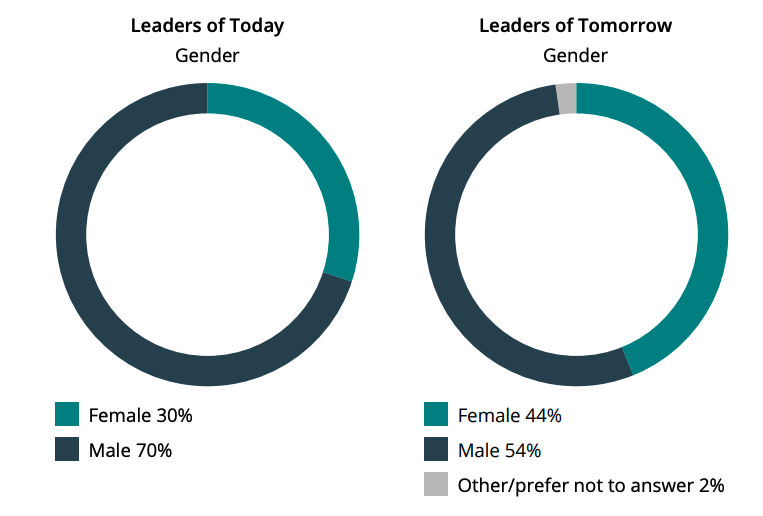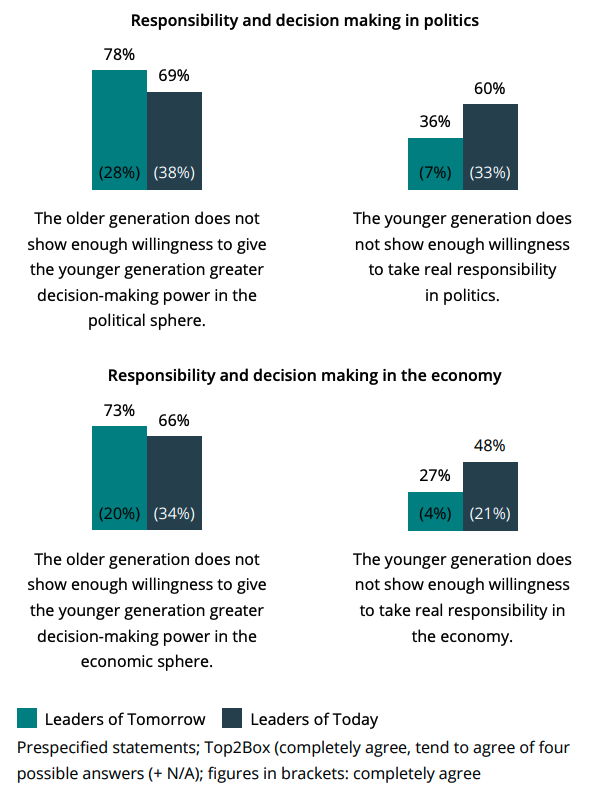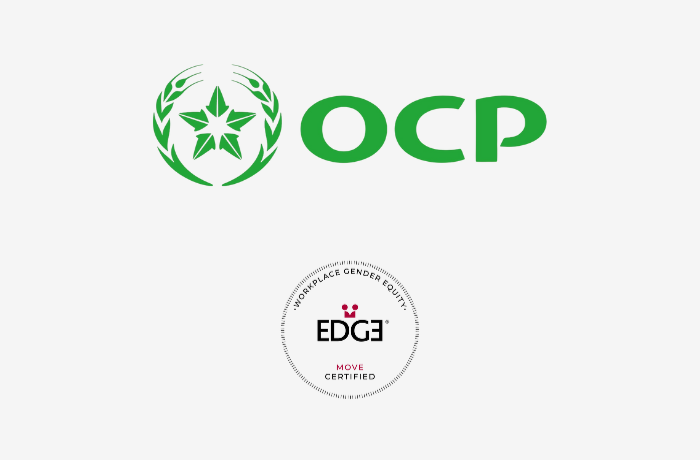Listen to the article: This article also comes with an audio file, located at the bottom of the page
Gender and age are two of the most frequently used characteristics to identify individuals because they are universal and trackable, regardless of country or industry.
But just as we talk about understanding the role of gender at work, so we also need to consider the intersection of age and gender, as neither operates in isolation and both are relevant when we talk about collaboration in the workplace.

The author George Orwell once
famously remarked: ‘Every generation
imagines itself to be more intelligent
than the one that went before it, and
wiser than the one that comes after
it.’ The same is true today.
Growing generational spans
Even to the casual observer, careers have grown longer in span. When my parents were of working age, no more than two or three generations were present in the workforce. Now, the EDGE Certification process regularly shows as many as five generations present within a workforce at the same time, a change that brings new complexities along with a new set of dynamics.
However, some things never change. The author George Orwell once famously remarked: “Every generation imagines itself to be more intelligent than the one that went before it, and wiser than the one that comes after it.” The same is true today. As in previous times, there’s a recognition that the younger generations are upset with those older than them. In the present day there are two key reasons often stated – the environment and climate change, and deficits in pension systems that will play out when the young retire in decades to come.
But despite the differences in generational perspectives, both inhabit the same workplace. This makes it important for organizations to measure and understand where different generations converge and where they diverge in their values, goals and expectations.
Fundamentally, organizations that take time to understand the intergenerational dynamics, can develop a robust plan for passing the baton from one generation to another seamlessly, without losing all the knowledge, wisdom and experience that has been accumulated over the years.
Views of today and tomorrow
Earlier this year, the St. Gallen Symposium alongside the Nuremberg Institute for Market Decisions published a global study in its ‘Voices of the Leaders of Tomorrow’ series entitled ‘Passing on the Baton’1. It detailed the results of a survey, run in February 2022, that sought views from 683 leaders of tomorrow and 300 leaders of today on decision-making, priorities, and collaboration across generations. Of the many findings, the gender split was especially remarkable.
Gender split of top and upper management of organizations

In overview, of the leaders of today occupying the top and upper management of organizations, 30% were female, and 70% were male; this reflects the unbalanced gender composition of top management teams in corporations today. But of the leaders of tomorrow, the demographic was different: 44% were female, 54% were male, and 2% classed themselves as non-binary or preferred not to answer.
This is interesting. Not only does the finding offer commentary on how gender composition at the top of the organization needs to evolve for organizations to remain current, but it also illustrates how definitions of gender have evolved between generations.
Managing generational complexities effectively means, in essence, defining a path for the sharing of knowledge and transitioning of power and decisionmaking from the older to the younger generations.
But therein lies the challenge – the older generation feel that they are at their peak and have little desire to share what they have until they need to.
‘Passing on the Baton’ studied this problem. It sought to find out where the views of leaders of today and leaders of tomorrow converge and diverge; it also wanted to uncover the issues that companies are facing when managing a multi-generational workforce.
There were several noteworthy findings. One that the leaders of today and tomorrow both agreed upon, was the social polarization of our societies which makes it difficult for people with different views to hold constructive conversations. In essence, our views have become more entrenched, and we are less capable of accepting opposing points of view; it’s now much harder to work and collaborate with somebody holding a different opinion. And social media is often behind this.
Worryingly, both generations of leaders believed that the other generation is demanding too much while complaining of unjustified demands placed on them. It’s not unsurprising that the leaders of tomorrow were unhappy about being told to wait to take up senior management roles.
Leaders of tomorrow and today disagree on the willingness of the younger generation to take real responsibility, revealing a major gap in perception
What is your opinion on the following items about transfer of decision-making and responsibility?

But beyond this is a pervading and skeptical view held by the leaders of today that the younger generation are unwilling to take on more responsibility – both in business and in politics. In contrast, the leaders of tomorrow responded that they want responsibility but are held back because the leaders of today don’t want to relinquish authority.
Another key finding made by the survey was that the leaders of tomorrow were extremely concerned about pension systems while leaders of today were less worried. Certain European countries serve to illustrate the future pension challenge. Fifteen years ago, the average Austrian would live in retirement for eight years. Now that figure is more like 22 years – a near tripling of the time they are entitled to make use of the pension system.
Value of quota systems
Both groups of leaders agreed that quotas are crucial instruments to ensure participation, whether in terms of politics or in relation to business decision-making.
But in seeking an imposed and non-negotiable quota system, should we be concerned? Have we lost faith that market-based mechanisms and voluntary systems work? Or we are saying that market-based instruments and voluntary systems are needed, but they nevertheless require a prescriptive framework to enable them to function properly?
Technology, and artificial intelligence especially, was another point of contention. The leaders of today worry that technology can no longer be controlled. In contrast, the leaders of tomorrow are more relaxed about the concept. Who is right and who is wrong is a game that will play out between digital immigrants – the leaders of today – who struggle with new technologies, and digital natives – the leaders of tomorrow – who are fully on board and trusting.
Working together
So, how do we enable and empower different views to be expressed, understood, and exchanged? And how can we move from divergent positions to that of collaboration, innovation and problem solving?
The first step is to acknowledge the tendency of older generations to attribute negative traits to those beneath them – a stereotype that some have labelled as the ‘kids-these-days effect’. The same can be said to be true for views held by the young of the older generation.
Next, we need to counter ageism that is very much alive and prevalent in youth-centric western societies. Often leaders of today are accused of having rigid views and personalities, of cognitive impairment, and are said to be digitally ignorant and unwilling to learn. This is not necessarily so.
Age-related complexity exists and it’s all around us – in the workplace, at home, in society, and in decisionmaking bodies. Ageism will persist, and the only thing we can do is manage it proactively. Intergenerational differences and complexities can be both harmful and wonderful. They should, however, be understood and leveraged for the benefit of all.
[1] https://symposium.org/voices-of-the-leaders-of-tomorrow-2022/



